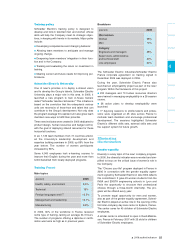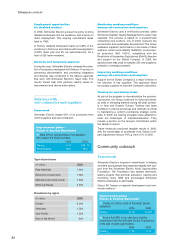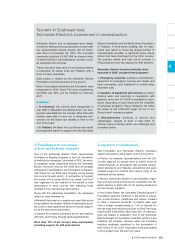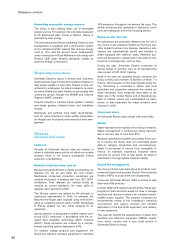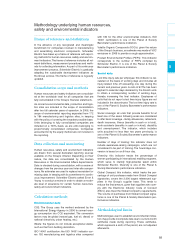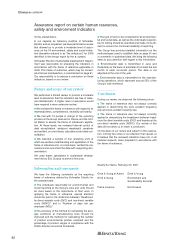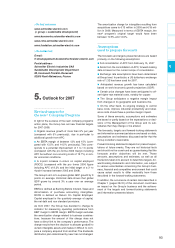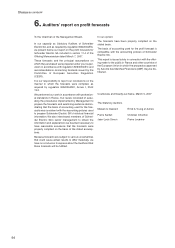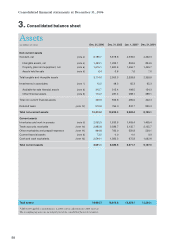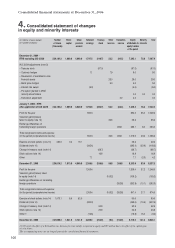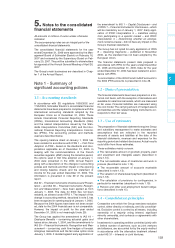APC 2006 Annual Report Download - page 93
Download and view the complete annual report
Please find page 93 of the 2006 APC annual report below. You can navigate through the pages in the report by either clicking on the pages listed below, or by using the keyword search tool below to find specific information within the annual report.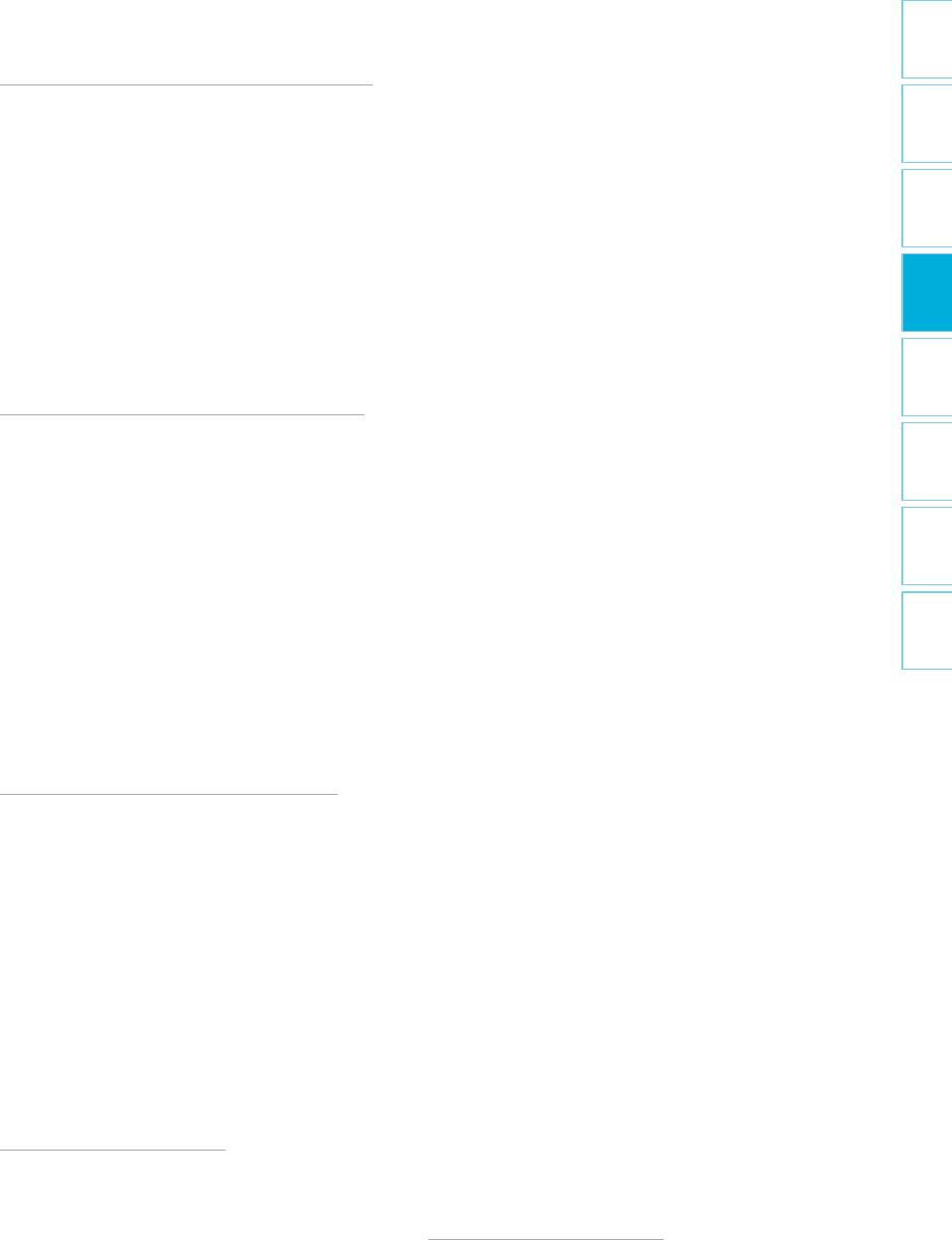
91
4
Frame of reference and definitions
In the absence of any recognized and meaningful
benchmark for companies involved in manufacturing
and assembling electronic components, Schneider
Electric has drawn up a frame of reference with report-
ing methods for human resources, safety and environ-
ment indicators.The frame of reference includes all rel-
evant definitions, measurement procedures and meth-
ods for collecting information. As part of its continuous
improvement process, Schneider Electric is gradually
adapting the sustainable development indicators as
the Group evolves. The frame of reference is regularly
updated.
Consolidation scope and methods
Human resources and safety indicators are consolidat-
ed at the worldwide level for all companies that are
fully consolidated in the Group’s financial statements.
As concerns environmental data, production and logis-
tics sites are included in the scope of consolidation
after two full calendar years of operation. In 2006, the
scope of environmental reporting expanded from 172
to 184 manufacturing and logistics sites, in keeping
with the policy of covering the broadest possible base.
Units belonging to fully consolidated companies are
included on a 100% basis, as are units belonging to
proportionally consolidated companies. Companies
accounted for by the equity method are not included in
the reporting.
Data collection and monitoring
Human resources, safety and environment indicators
are drawn from several dedicated reporting sources
available on the Group’s intranet. Depending on their
nature, the data are consolidated by the Human
Resources or the Environmental Affairs departments.
Data is checked during consolidation, with a review of
changes from the previous year and inter-site compar-
isons. No estimates are used to replace inconsistent or
missing data. In keeping with its commitment to contin-
uous improvement, Schneider Electric asked Ernst &
Young to conduct a review in order to obtain a moder-
ate level of assurance for certain human resources,
safety and environment indicators.
Calculation methods
Environmental data
CO2: The Group uses the method endorsed by the
International Energy Agency in 2006 to convert ener-
gy consumption into CO2 equivalent. The conversion
factors may be global (natural gas, fuel oil, diesel) or
national (electricity, urban heating, etc.).
Waste: the figures do not include exceptional waste,
such as that from building demolition.
ISO 14001 certification: the ISO 14001 indicator cov-
ers 192 manufacturing and logistics sites compared
with 184 for the other environmental indicators. ISO
14001 certification is one of the Planet & Society
Barometer’s performance indicators.
Volatile Organic Compounds (VOCs): given the nature
of the Group’s business, an estimate was made of VOC
emissions in 2006 to provide a rough approximation.
Product Environmental Profiles (PEPs): This indicator
corresponds to the number of PEPs compiled by
Schneider Electric. It is one of the Planet & Society
Barometer’s performance indicators.
Social data
Lost time injury rate per employee: this indicator is cal-
culated on the basis of working days and includes all
injury-related time off exceeding one day during the
current and previous years. A ratio of 6/7ths has been
applied to calendar days declared by the French units
to obtain a corresponding number of working days,
thereby increasing the final indicator. Employees of
units that do not report a lost time injury figure are not
included in the denominator. The lost time injury rate is
one of the Planet & Society Barometer's performance
indicators.
Social coverage: all units that provide benefits for at
least one of the seven following areas are considered
to offer basic coverage – family allowances, retirement,
death insurance, illness (benefits in cash or in kind),
work accidents (benefits in cash or in kind), disability
and unemployment. The indicator, which includes
units acquired no less than two years previously, is
one of the Planet & Society Barometer’s performance
indicators.
Number of days of training: this indicator does not
include awareness-raising campaigns, which are not
considered to be part of training. The hours/days con-
version is based on an 8-hour day.
Diversity: this indicator tracks the percentage of
women participating in international mobility programs,
which serve to identify high-potential talent within
Schneider Electric. Diversity is one of the Planet &
Society Barometer’s performance indicators.
Global Compact: this indicator, which tracks the per-
centage of unit purchases made from Global Compact
signatories, covers the 2,000 largest referenced sup-
pliers in the Group’s supplier base. This tends to
reduce the final amount, given that suppliers who com-
ply with the Electronic Industry Code of Conduct
(EICC) also meet the Global Compact’s requirements.
The volume of purchases from Global Compact signa-
tories is one of the Planet & Society Barometer’s per-
formance indicators.
Methodological limits
Methodologies used to establish environmental indica-
tors may provide incomplete data due to current-month
estimates made during reporting. These estimates,
which represent a sixth of the period, are not adjusted
afterwards.
Methodology underlying human resources,
safety and environmental indicators


